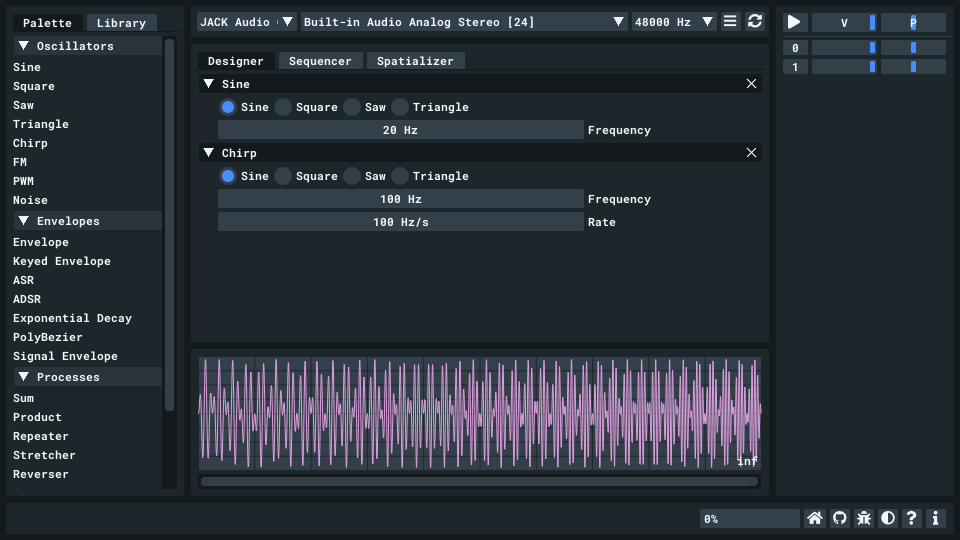Syntacts (Standalone)

Tool Summary
| General Purpose Information | |
|---|---|
| Year of First Releaseⓘ The year a tool was first publicly released or discussed in an academic paper. | 2020 |
| Platformⓘ The OS or software framework needed to run the tool. | Windows, macOS, Linux |
| Availabilityⓘ If the tool can be obtained by the public. | Available |
| Licenseⓘ Tye type of license applied to the tool. | Open Source (MIT) |
| Venueⓘ The venue(s) for publications. | IEEE ToH |
| Intended Use Caseⓘ The primary purposes for which the tool was developed. | Hardware Control |
| Hardware Control Information | |
|---|---|
| Haptic Categoryⓘ The general types of haptic output devices controlled by the tool. | Vibrotactile |
| Hardware Abstractionⓘ How broad the type of hardware support is for a tool.
| Class |
| Device Namesⓘ The hardware supported by the tool. This may be incomplete. | Voice Coil |
| Body Positionⓘ Parts of the body where stimuli are felt, if the tool explicitly shows this. | N/A |
| Interaction and Interface Information | |
|---|---|
| Driving Featureⓘ If haptic content is controlled over time, by other actions, or both. | Time |
| Effect Localizationⓘ How the desired location of stimuli is mapped to the device.
| Location-aware |
| Media Supportⓘ Support for non-haptic media in the workspace, even if just to aid in manual synchronization. | None |
| Iterative Playbackⓘ If haptic effects can be played back from the tool to aid in the design process. | Yes |
| Design Approachesⓘ Broadly, the methods available to create a desired effect.
| DPC, Process, Sequencing |
| Interaction Metaphorsⓘ Common UI metaphors that define how a user interacts with a tool.
| Track, Keyframe |
| Storageⓘ How data is stored for import/export or internally to the software. | WAV, AIFF, CSV, Syntacts Signal File |
| Connectivityⓘ How the tool can be extended to support new data, devices, and software. | API |
Additional Information
Syntacts is an API and graphical tool for creating audio-driven vibrotactile arrays. Vibrotactile “signals” can be created using common waveforms and combined using operations such as sequencing and multiplication. Complex envelopes can also be applied to these different signals. The Syntacts GUI includes a spatializer for mapping desired signals to the correct virtual location on an array and a track-based sequencer to aid in performing these signal operations.
For more information, consult the 2020 Transactions on Haptics paper and the GitHub repository.